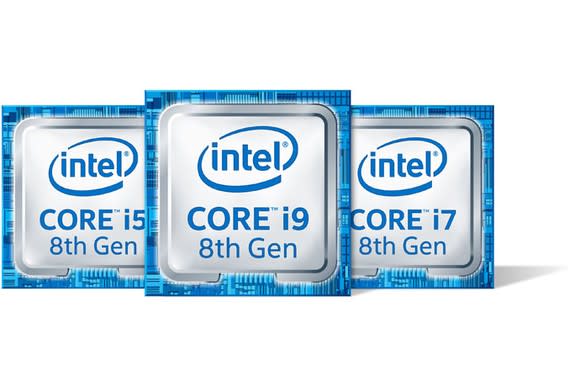What Happens if Intel Corp.'s 10-Nanometer Issues Aren't Fixed Soon?
Chip giant Intel (NASDAQ: INTC) has faced significant delays in getting its 10-nanometer chip manufacturing technology, which is supposed to enable faster, more power-efficient chips than its current 14-nanometer technology can, into mass production.
The technology, which was originally slated to go into mass production by the end of 2015 to support product shipments in 2016, still isn't in high-volume production and isn't expected to begin ramping up until the second half of 2018. This kind of delay is unprecedented for Intel.

Image source: Intel.
Given the significant delays as well as management's unwillingness to give meaningful information on how the development of the technology is progressing, it's clear that the company is facing serious technical issues.
In this article, I'd like to go over the potential impact that Intel's business would face if the company can't fix the technology by the end of the year.
Potential margin drop
If Intel can manufacture 10-nanometer chips by the end of the year but it can only do so at relatively low yield rates (yield refers to the percentage of the chips produced that are salable), then the company's gross profit margin could suffer.
To understand why, first know that at any given point in time the cost to produce a wafer of chips using a certain technology is relatively fixed (newer technologies generally cost more per wafer than older ones). The cost to produce a chip depends on the cost of the wafer, the size of the chip being produced (something that's also fixed for a given design), and the yield rate.
The main variable, then, is yield rate. The lower the yield rate, the higher the effective cost since the cost to produce the wafer is spread out across fewer products. That higher production cost means lower gross profit margin on the chips sold, ultimately negatively impacting the profitability of Intel's business.
Low yield rates also mean potential supply issues as fewer chips are produced for a given amount of installed capacity than what Intel was likely planning for. This could lead to Intel potentially missing shipment goals.
While Intel has avoided having to bring 10 nanometer into production for several product generations by continuing to improve its 14-nanometer technology and products built using it, that strategy can't continue indefinitely.
Loss of product competitiveness
If Intel finds itself in a situation where it simply can't build viable products using its 10-nanometer technology (this is something that's a legitimate concern), then that'd be potentially worse for the company.
Instead of bringing an immature-but-functional technology into production, Intel could simply find itself with nothing new to sell. This would be bad for the chipmaker, as its system partners rely on new chips to put out new computers to try to sell to prospective customers. Without those new systems in the market, overall computer sales might not be as strong as Intel and its partners might hope.
Moreover, by not bringing out new products, Intel could see its competitive positioning in the market erode as competitors roll out new chips. While Intel's sheer scale and brand power can protect it for a while against a degrading competitive positioning in some markets (e.g., personal computer chips), the reality is that multiple generations of a worsening competitive position will compel customers and partners to consider alternatives to try to protect/grow their own businesses.
For Intel to fundamentally maintain the kind of market share that it does with gross profit margin that investors find acceptable, the company needs to continually roll out leadership products at a predictable pace. Getting 10 nanometer into good shape and using it to build next-generation products is critical to achieving that goal.
More From The Motley Fool
Ashraf Eassa owns shares of Intel. The Motley Fool recommends Intel. The Motley Fool has a disclosure policy.

 Yahoo Finance
Yahoo Finance 